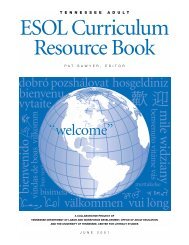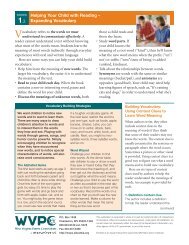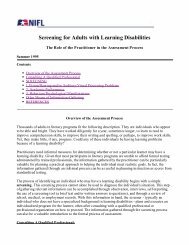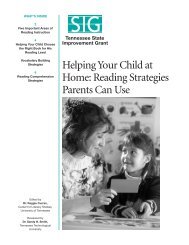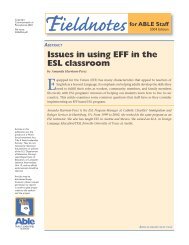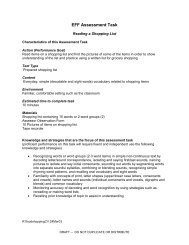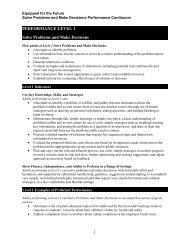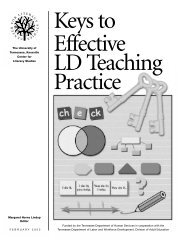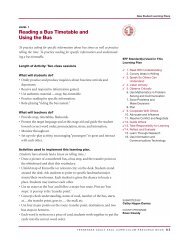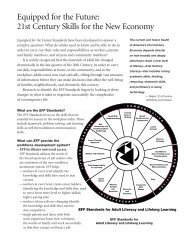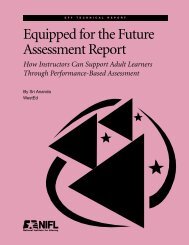Building Bridges Between School and Home - Center for Literacy ...
Building Bridges Between School and Home - Center for Literacy ...
Building Bridges Between School and Home - Center for Literacy ...
- No tags were found...
Create successful ePaper yourself
Turn your PDF publications into a flip-book with our unique Google optimized e-Paper software.
worked in the classroom <strong>and</strong> how it factored intotheir grades. Then we let the parents <strong>and</strong> childrentake the AR assessment. Parents really liked the interactivesession. They loved working with the computers,they got h<strong>and</strong>s-on experience,they received a free book, <strong>and</strong> theywere able to read together with theirchild. The children were so excited thatthey wanted to continue working withtheir parents on the AR activities. Theywanted to show their parents all aboutthe AR program.Although we considered the night asuccess, I was disappointed because we were tryingto present too much in<strong>for</strong>mation in too little time.We felt like we weren’t able to adequately answer thequestions that the parents had because of the massiveamount of in<strong>for</strong>mation we were trying to present. Wewere trying to do everything with this one DIBELSmeeting <strong>and</strong> we should have broken it down into severalsmaller sessions.In the past we weren’t happy with the grades wewere giving out because we kept saying we’re givingthem an ‘E,’ but these kids still have problems thatare not identified. So, when we sent out the firstprogress report, the teachers were apprehensive becausewe were being very honest with the parentsabout their child’s level of per<strong>for</strong>mance. However,after the reports went home the teachers began receivingnumerous phone calls from parents seekinghelp. They wanted to know how to help their child.The parents asked teachers what needed to be done“My project was reallyabout improvingcommunication with theparents so they wouldknow more than just aletter grade.”to help improve their child’s skills <strong>and</strong> per<strong>for</strong>mance.So providing this in<strong>for</strong>mation really did cause parentsto become more involved. They asked <strong>for</strong> help<strong>and</strong> the teachers were able to give it to them. Whenthe teachers saw the end result, theysaid that students were no longer fallingthrough the cracks. Problems wereidentified earlier on. This allowed us toindividualize our instruction <strong>and</strong> targetthe students’ weaknesses. Teachers wereable to work more closely with the lowper<strong>for</strong>mance groups while the studentswho were per<strong>for</strong>ming on or abovegrade-level work independently.My project was really about improving communicationwith the parents so they would knowmore about their child’s per<strong>for</strong>mance than just aletter grade. Instead, they would know what theirchild was doing <strong>and</strong> learning <strong>and</strong> how well theywere actually per<strong>for</strong>ming. We developed a rubric(Appendix III) so parents could tell what theirchild’s needs were <strong>and</strong> how to help in areas wherethey struggled. The progress reports specify thestrengths <strong>and</strong> weaknesses of the student <strong>and</strong> giveparents strategies.When we do this again we will probably havegrade-level meetings. It’s hard to ask your teachers<strong>and</strong> parents to keep coming in after school, soyou have a large meeting but it’s not as effective.Our meeting would have been more effective if theteachers presented the in<strong>for</strong>mation at grade-levelmeetings.BUILDING BRIDGES BETWEEN SCHOOL AND HOME: STORIES OF SUCCESS FROM LAWRENCE COUNTY, TENNESSEE8



